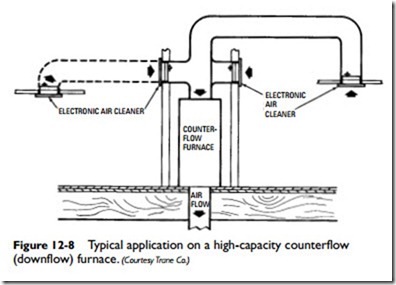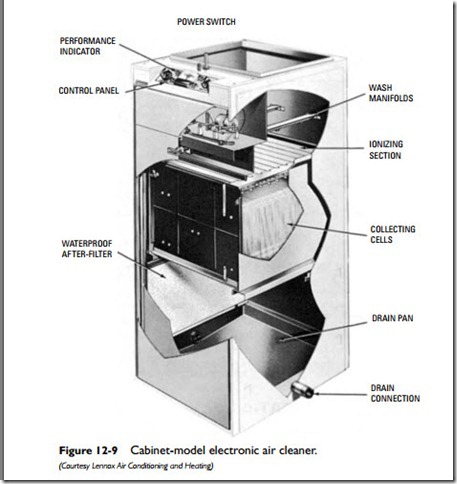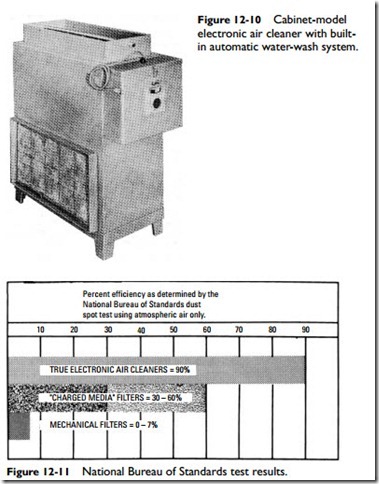Two-Stage Air Cleaners
The two-stage (or ionizing) electronic air cleaner also operates on the electrostatic principle, but the airborne particles pass through two electrical fields rather than the single field used in charged- media air cleaners. The effectiveness of this type of air cleaner is indicated in test results from the National Bureau of Standards (see Figure 12-11).
Air entering a two-stage air cleaner must first pass through a permanent screen or prefilter, which catches the larger airborne particles. After passing through the prefilter, the air enters the so- called ionizer, or first stage, where the airborne particles receive an intense positive electrical charge. The positively charged airborne particles subsequently enter the collection, or second stage, which consists of a series of collector plates. These collector plates are metal
plates or screens alternately charged with positive and negative high voltages. Because the airborne dust and dirt particles received a positive charge when they passed through the first stage of the electronic air cleaner, they are repelled by the positively charged plates in the second stage and propelled against the negatively charged collector plates where they adhere until washed away. The airborne particles are removed from the negative collector plates by periodic vacuuming or washing. Some electronic air cleaners are equipped with washing systems that flush the particles off the plates.
The first stage (ionizing section) and second stage (collector section) are referred to collectively as the electronic cell, or the electronic air-cleaning cell.
Automatic Controls
A built-in electronic air cleaner can be connected electrically to the system blower motor or directly through a disconnect switch to the 120-volt line voltage power source. If the unit is connected to the sys- tem blower motor, the electronic cell will energize each time the blower motor operates.
Because the electronic air cleaner can be wired to operate either automatically or continuously in conjunction with fan operation, there is no need for a special wall-mounted air cleaner control. Thus, the fan control on a room thermostat, or combination thermostat
and humidistat, is used to control both the system fan and the electronic air cleaner. A typical unit combining all heating and/or cooling system controls under a single cover is shown in Figure 12-12. When the fan control switch is set on auto, the air is cleaned automatically whenever the heating and/or cooling system is operating. Continuous air cleaning (when extra air cleaning is required) is obtained by setting the fan control switch at on.


